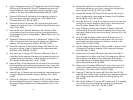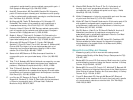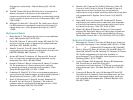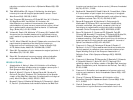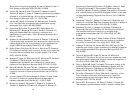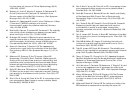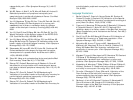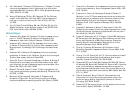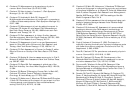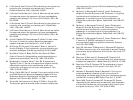
65
51. Li KK, Harris K, Hadi S, Chow E. What should be the optimal cut
points for mild, moderate, and severe pain? Journal of
Palliative Medicine 10(6): 1338-1346, 12/2007.
52. Li KK, Hadi S, Kirou-Mauro A, Chow E. When should we define
the response rates in the treatment of bone metastases by
palliative radiotherapy? Clin Oncol (R Coll Radiol ) 20(1): 83-
89, 2/2008.
53. Li KK, Harris K, Hadi S, Chow E. What should be the optimal cut
points for mild, moderate, and severe pain? J Palliat Med
10(6): 1338-1346, 12/2007.
54. Li KK, Hadi S, Kirou-Mauro A, Chow E. When should we define
the response rates in the treatment of bone metastases by
palliative radiotherapy? Clin Oncol (R Coll Radiol ) 20(1): 83-
89, 2/2008.
55. Lydick E, Epstein RS, Himmelberger D, White CJ. Area under
the curve: a metric for patient subjective responses in
episodic diseases. Qual Life Res 4(1): 41-45, 2/1995.
56. McDonald DD, Poudrier S, Gonzalez T, Brace J, Lakhani K,
Landry S, Wrigley P. Pain problems in young adults and pain
reduction strategies. Pain Manag Nurs 3(3): 81-86, 9/2002.
57. McGillis HL, Doran D, Baker GR, Pink GH, Sidani S, O'Brien-
Pallas L, Donner GJ. Nurse staffing models as predictors of
patient outcomes. Med Care 41(9): 1096-1109, 9/2003.
58. Miaskowski C, Dodd M, West C, Paul SM, Schumacher K,
Tripathy D, Koo P. The use of a responder analysis to identify
differences in patient outcomes following a self-care
intervention to improve cancer pain management. Pain
129(1-2): 55-63, 5/2007.
59. Philip J, Smith WB, Craft P, Lickiss N. Concurrent validity of the
modified Edmonton Symptom Assessment System with the
Rotterdam Symptom Checklist and the Brief Pain Inventory.
Support Care Cancer 6(6): 539-541, 11/1998.
60. Puhan MA, Schunemann HJ, Wong E, Griffith L, Guyatt GH.
The standard gamble showed better construct validity than
66
the time trade-off. Journal of Clinical Epidemiology 60(10):
1029-1033, 10/2007.
61. Radbruch L, Sabatowski R, Loick G, Jonen-Thielemann I,
Kasper M, Gondek B, Lehmann KA, Thielemann I. Cognitive
impairment and its influence on pain and symptom
assessment in a palliative care unit: development of a
Minimal Documentation System. Palliat Med 14(4): 266-276,
7/2000.
62. Radbruch L, Sabatowski R, Loick G, Jonen-Thielemann I,
Kasper M, Gondek B, Lehmann KA, Thielemann I. Cognitive
impairment and its influence on pain and symptom
assessment in a palliative care unit: development of a
Minimal Documentation System. Palliat Med 14(4): 266-276,
7/2000.
63. Radbruch L, Sabatowski R, Loick G, Jonen-Thielemann I, Elsner
F, Hormann E. [MIDOS--validation of a minimal
documentation system for palliative medicine]. Schmerz
14(4): 231-239, 8/2000.
64. Serlin RC, Mendoza TR, Nakamura Y, Edwards KR, Cleeland
CS. When is cancer pain mild, moderate or severe? Grading
pain severity by its interference with function. Pain 61(2): 277-
284, 5/1995.
65. Shacham S, Reinhardt LC, Raubertas RF, Cleeland CS.
Emotional states and pain: intraindividual and interindividual
measures of association. J Behav Med 6(4): 405-419, 12/1983.
66. Shacham S, Dar R, Cleeland CS. The relationship of mood
state to the severity of clinical pain. Pain 18(2): 187-197,
2/1984.
67. Stenseth G, Bjornes M, Kaasa S, Klepstad P. Can cancer
patients assess the influence of pain on functions? A
randomised, controlled study of the pain interference items in
the Brief Pain Inventory. BMC Palliat Care 6(1): 2, 3/2007.
68. Stroud MW, Turner JA, Jensen MP, Cardenas DD. Partner
responses to pain behaviors are associated with depression
and activity interference among persons with chronic pain
and spinal cord injury. J Pain 7(2): 91-99, 2/2006.



